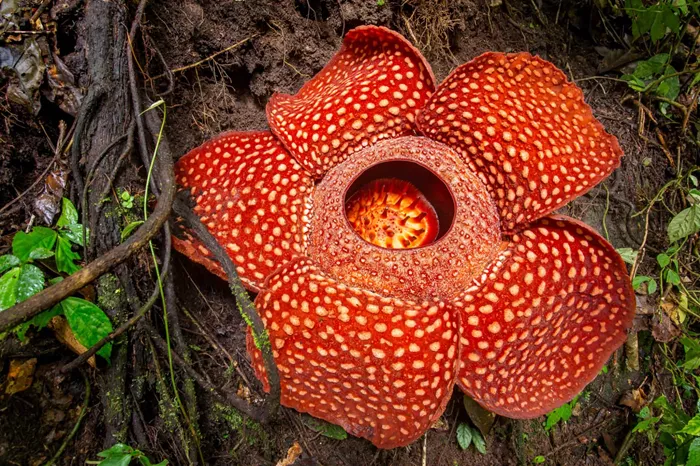Many plants emit pleasant fragrances, but a fascinating group known as “carrion flowers” produce odors resembling rotting flesh to attract specific pollinators like flies and beetles.
These plants, including the giant Rafflesia arnoldii (the “stinking corpse lily”) and the titan arum (Amorphophallus titanum), use dark, fleshy blooms and foul smells to mimic decaying animal carcasses.
The titan arum, native to Sumatra, Indonesia, can grow up to nine feet tall and emits a powerful stench described as a mix of dead fish, rotting cabbage, and garlic. It blooms rarely, every two to three years, drawing crowds eager to witness and smell its unique odor.
Recent research has uncovered how these plants produce their putrid scent. They have evolved specific enzymes through gene duplication and mutation that convert methanethiol—a smelly compound also responsible for bad breath—into dimethyl disulfide and other sulfur-containing compounds. These chemicals mimic the smell of decomposing flesh, effectively luring carrion flies for pollination.
Interestingly, despite their notorious odor, these plants also produce sweet-smelling compounds, possibly to fine-tune their scent to attract a broader range of pollinators or to adapt if carrion flies are scarce. They combine visual cues (flesh-colored floral parts), thermal signals (heat generation), and chemical mimicry to maximize pollination success.
Other carrion flowers, such as Stapelia gigantea, native to southern Africa, also emit a similar rotten meat smell. Its large, star-shaped flowers are hairy and colored with red and yellow markings, attracting flies that mistake the flower for a decaying carcass. This species can suppress human appetite due to its foul odor.
These plants demonstrate remarkable evolutionary adaptations, using complex chemistry and mimicry to survive and reproduce in their ecosystems by exploiting the sensory preferences of their insect pollinators.


